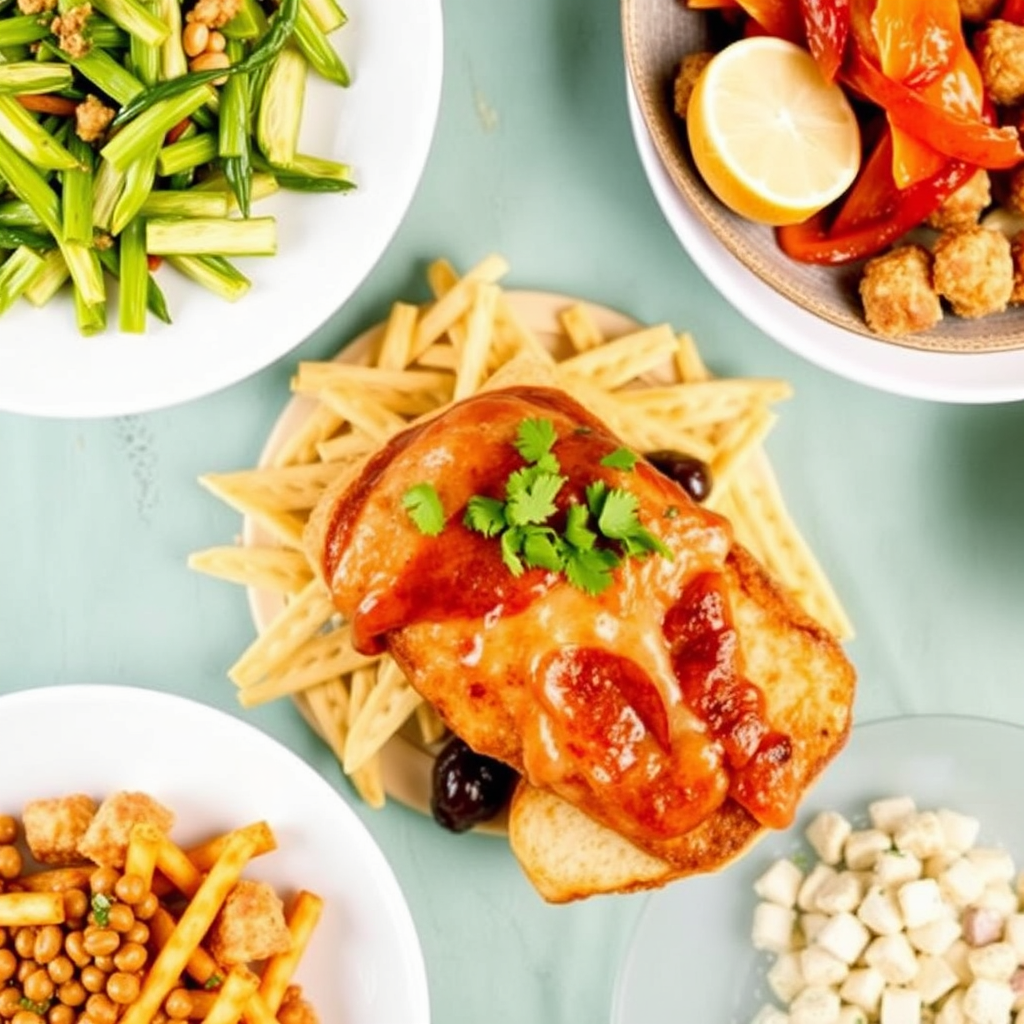American Food: 10 Must-Try Regional Dishes

American Food: 10 Must-Try Regional Dishes
Table of Contents
- Introduction
- New England: Clam Chowder
- Mid-Atlantic: Cheesesteak
- The South: Shrimp and Grits
- Midwest: Chicago-Style Deep-Dish Pizza
- Southwest: Green Chile Stew
- Pacific Northwest: Salmon Bake
- California: Fish Tacos
- Hawaii: Kalua Pig
- Alaska: King Crab Legs
- Great Plains: Chili
- Conclusion
- Frequently Asked Questions (FAQ)
Introduction
American cuisine is a melting pot of flavors, reflecting the country's diverse cultures and landscapes. From coast to coast, each region boasts unique dishes that are a testament to its history and traditions. This article explores ten must-try regional dishes that offer a delicious journey through the United States.New England: Clam Chowder
New England Clam Chowder is a creamy, hearty soup packed with clams, potatoes, onions, and often salt pork. It's a staple in the northeastern states, particularly during the colder months. The key to a good chowder is fresh clams and a rich, velvety broth. There are variations, some with bacon and some without flour, but all capture the essence of the sea.Mid-Atlantic: Cheesesteak
The Cheesesteak is a Philadelphia icon. Thinly sliced steak, grilled and piled onto a long roll, then topped with melted cheese (often provolone, American, or Cheez Whiz) and optionally onions, peppers, or mushrooms. The classic question is: "Wit' or wit'out?" – referring to whether you want onions or not. Don't even think about asking for ketchup!The South: Shrimp and Grits
Shrimp and Grits is a quintessential Southern dish, particularly popular in the Carolinas and Georgia. Creamy, cheesy grits are topped with sautéed shrimp, often seasoned with bacon, garlic, and spices. It's a comforting and flavorful combination that showcases the region's seafood and agricultural bounty. Different regions have their own variations on the spice blend and grit type.Midwest: Chicago-Style Deep-Dish Pizza
Chicago-Style Deep-Dish Pizza is a pizza unlike any other. It's baked in a high-sided pan, creating a thick, buttery crust that's layered with cheese, toppings, and then a generous amount of tomato sauce on top. It's a knife-and-fork affair, and a true Chicago culinary experience. Each slice is incredibly filling.Southwest: Green Chile Stew
Green Chile Stew is a Southwestern staple, particularly in New Mexico. It's a hearty stew made with green chiles (usually Hatch chiles), pork or beef, potatoes, onions, and spices. The level of heat can vary depending on the chiles used, but it's always a flavorful and warming dish. This is often served with warm tortillas for dipping.Pacific Northwest: Salmon Bake
The Pacific Northwest is known for its abundant salmon, and a Salmon Bake is a traditional way to prepare it. Salmon fillets are often seasoned with herbs and spices and then cooked over an open fire on cedar planks. The cedar infuses the salmon with a smoky, earthy flavor, resulting in a moist and delicious dish.California: Fish Tacos
Fish Tacos are a California classic, particularly popular in Southern California. Grilled or fried white fish is served in a corn or flour tortilla with toppings like shredded cabbage, pico de gallo, and a creamy sauce. The freshness of the fish and the vibrant flavors of the toppings make it a light and refreshing meal.Hawaii: Kalua Pig
Kalua Pig is a traditional Hawaiian dish cooked in an underground oven called an imu. A whole pig is seasoned with Hawaiian sea salt and wrapped in ti leaves before being slow-cooked for hours. The result is incredibly tender and smoky pork that's often shredded and served with poi (taro root paste) and other Hawaiian dishes.Alaska: King Crab Legs
Alaskan King Crab Legs are a delicacy renowned for their sweet and succulent meat. Steamed or boiled, the crab legs are often served with melted butter and lemon. The sheer size of the crab legs makes it a memorable and impressive dish. Sourcing is key for sustainable enjoyment of this seafood treasure.Great Plains: Chili
Chili, especially Texas-style chili, is a popular dish in the Great Plains region. Often made with beef, chiles, and spices (but traditionally *without* beans in Texas), chili is a hearty and flavorful stew perfect for cold weather. Every cook has their secret ingredient or spice blend. "Balance does not mean eternal peace, but how we handle imbalance." This perfectly describes chili – it's not about perfect ingredients, but how well they blend together to create a harmonious, flavorful dish.Conclusion
From the creamy clam chowder of New England to the spicy green chile stew of the Southwest, American regional cuisine offers a diverse and delicious culinary adventure. These ten dishes are just a starting point for exploring the rich tapestry of flavors that make up American food. Each dish tells a story of the region's history, culture, and ingredients.Frequently Asked Questions (FAQ)
Q: What makes a dish "regional"?
A: A regional dish is typically associated with a specific geographic area and is characterized by the use of locally sourced ingredients, traditional cooking methods, and cultural influences unique to that region.
Q: Are there variations of these dishes within their respective regions?
A: Absolutely! Many of these dishes have numerous variations depending on the specific location, family traditions, and personal preferences. For example, clam chowder can vary in thickness, ingredients, and even the type of clams used.
Q: Where can I find the most authentic versions of these dishes?
A: The best way to experience these dishes authentically is to travel to the region where they originated and seek out local restaurants, farmers markets, and food festivals. Talking to local chefs and cooks can also provide valuable insights.


Comments
Post a Comment